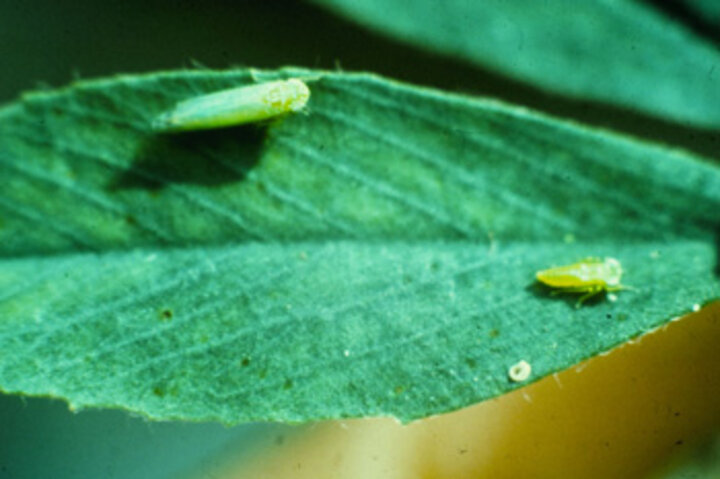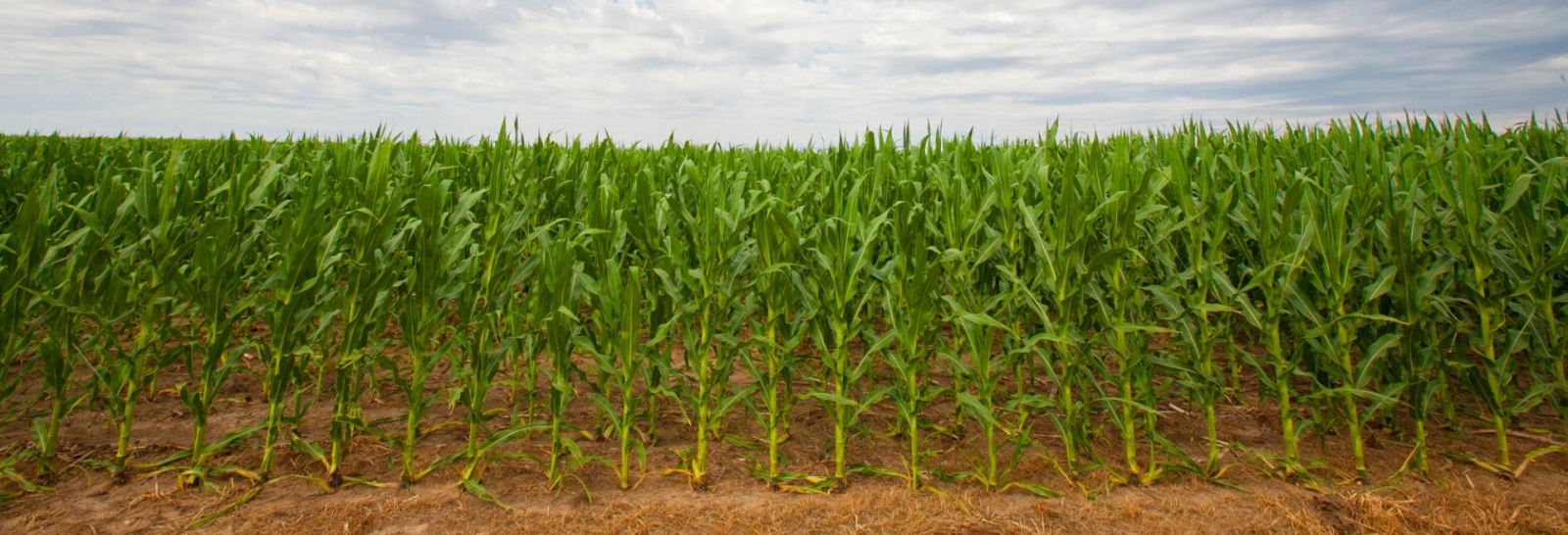July 10, 2009

These small (1/8 inch long), bright green, wedge-shaped insects (Figure 1) may cause severe damage to alfalfa by injecting a toxin into the plant as they feed. This feeding results in a distinctive yellow or purple triangle shape at the tip of the leaf. First year spring-planted alfalfa fields are particularly attractive to and vulnerable to potato leafhoppers, as are fields planted last year.
In older fields, these insects are usually a problem on second and third cuttings. Newly developed resistant varieties will protect from potato leafhoppers fairly well, but alfalfa in the seedling stage may still be damaged. All fields should still be scouted, as large numbers of leafhoppers may still cause a problem, even in resistant variety fields.
Management
Treatment decisions are based on numbers captured by sweep net, the only reliable way to scout for potato leafhoppers. Move a sweep net with a 15-inch diameter opening vigorously through the foliage in 180 degree arcs at several locations in each field. Take at least 25 sweeps from each of four locations in each field. The number of leafhoppers per sweep is obtained by counting the leafhoppers in the net and dividing by the number of sweeps taken in the field.
See Tables 1-3 (below) for treatment thresholds for different alfalfa heights and insecticide application costs. Note that you don't need a lot of leafhoppers to cause a problem.
More Information
Additional information on potato leafhopper biology and management is available in NebGuide G1136, Potato Leafhopper Management in Alfalfa.
Many insecticides are registered for control, and all will provide good results when applied properly. Refer to the UNL Department of Entomology Web site for a list of suggested insecticides.
Bob Wright
Extension Entomologist
Keith Jarvi
Extension Educator
| Table 1. Treatment thresholds for potato leafhoppers (average number per sweep) on alfalfa that is 1 to 4 inches tall. | ||||||
|
Value of hay (per ton) |
Cost of insecticide application (per acre) |
|||||
|
$8 |
$10 |
$12 |
$14 |
$16 |
$20 |
|
| $ 60 |
0.4 |
0.5 |
0.6 |
0.7 |
0.8 |
1.0 |
|
$ 80 |
0.3 |
0.4 |
0.5 |
0.5 |
0.6 |
0.75 |
|
$100 |
0.25 |
0.3 |
0.4 |
0.4 |
0.5 |
0.6 |
|
$120 |
0.2 |
0.25 |
0.3 | 0.35 |
0.4 |
0.5 |
|
$140 |
0.2 |
0.2 |
0.25 |
0.3 |
0.3 |
0.4 |
|
$160 |
0.15 |
0.2 |
0.3 |
0.3 |
0.3 |
0.4 |
|
Table 2. Treatment thresholds for potato leafhoppers (average number per sweep) on alfalfa that is 4 to 8 inches tall. |
||||||
|
Value of hay (per ton) |
Cost of insecticide application (per acre) |
|||||
|
$8 |
$10 |
$12 |
$14 |
$16 |
$20 |
|
|
$ 60 |
0.7 |
0.8 |
1.0 |
1.0 |
1.3 |
1.7 |
|
$ 80 |
0.6 |
0.6 |
0.75 |
0.9 |
1.0 |
1.3 |
|
$100 |
0.4 |
0.5 |
0.6 |
0.7 |
0.8 |
1.0 |
|
$120 |
0.3 |
0.4 |
0.5 |
0.6 |
0.7 |
0.8 |
|
$140 |
0.3 |
0.35 |
0.4 |
0.5 |
0.6 |
0.7 |
|
$160 |
0.25 |
0.3 |
0.4 |
0.4 |
0.5 |
0.6 |
|
Table 3. Treatment thresholds for potato leafhoppers (average number per sweep) on alfalfa that is 8 to 12 inches tall. |
||||||
|
Value of hay (per ton) |
Cost of insecticide application (per acre) |
|||||
|
$8 |
$10 |
$12 |
$14 |
$16 |
$20 |
|
|
$ 60 |
2.0 |
2.4 |
2.8 |
3.0 |
3.9 |
5.0 |
|
$ 80 |
1.8 |
1.9 |
2.2 |
2.7 |
3.0 |
4.0 |
|
$100 |
1.2 |
1.5 |
1.8 |
2.1 |
2.4 |
3.0 |
|
$120 |
0.9 |
1.2 |
1.5 |
1.8 |
2.1 |
2.4 |
|
$140 |
0.9 |
1.0 |
1.2 |
1.5 |
1.8 |
2.0 |
|
$160 |
0.8 |
0.9 |
1.0 |
1.2 |
1.5 |
1.8 |
